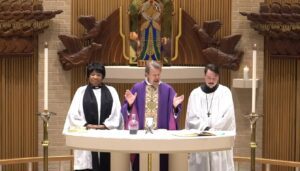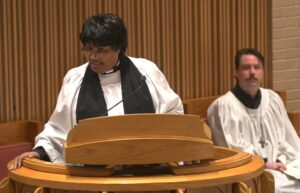An Episcopal Church Service
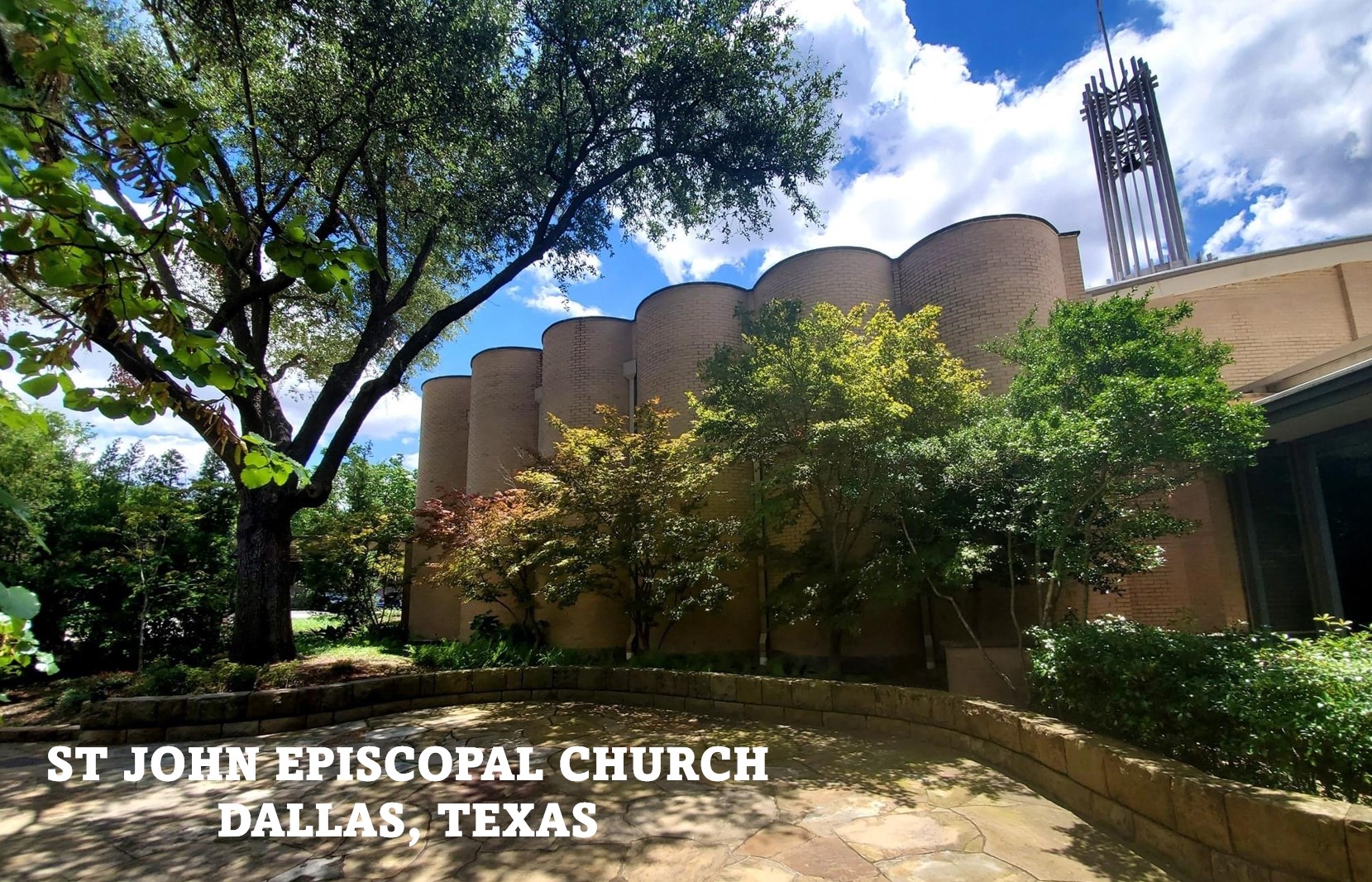
When you visit an Episcopal Church or any church at all for the first time it may feel a little strange and intimidating. The service in an Episcopal Church is defined and directed by the Book of Common Prayer following the scriptures and long-held tradition.
We want you to be able to relax and feel welcome and able to participate as you choose. Here is a guide to some of what you might expect if you go to a worship service at an Episcopal Church.
Preparing for Worship
It’s good to arrive a few minutes before the service so you can get yourself settled. There will be ushers or greeters who will give you a service program to guide you through the service.
You can sit anywhere you would like. In addition to the service program, you will find various books in the racks on the pew in front of you, including the Book of Common Prayer (BCP).
The prayer book has portions of the service which can be followed by the using the page numbers identified in the program. You will also find a dark blue book called “The Hymnal 1982” (See Side Bar) which contains the hymns used in the service that day. A few minutes before the service, the organist will play music – the Prelude – to set the mood and prepare the audience for the service.
Most services start with a song that everyone sings while standing. At St John’s, the service begins with a procession of choir members and liturgical ministers led by acolytes carrying a cross. As it passes each pew, many members genuflect or crossing themselves. Neither is required but considered a gesture of respect.
When the processional song is over the priest leading the service and the assembly say the Opening Acclamation which is a formal way of greeting one another. The presider then says a prayer called a Collect which is meant to bring our hearts and minds together to worship our Lord.
Readings
While the congregation sits, lay readers read from the Old Testament; followed by congregational recitation of a psalm; then a reading from the New Testament, a hymn, and, finally, the priest reading a passage from the Gospels.
Because the Gospel – the stories of Jesus’ life and death – is central to our faith, that reading gets “special treatment.” The Gospel book is taken from the altar and brought into the middle of the assembly where it is read. Everyone stands in their pew, turns, faces the Gospel book during the reading. The readings are part of a set Lectionary which assigns readings for every Sunday on a three -year cycle.
Sermon (Homily)
Following the Gospel reading, a sermon is preached, usually by a priest (but on occasion it might be a lay person). The sermon is meant to take what we have heard in the readings and engage those learnings with our current lives.
Statements of Faith & Prayers of the Community
After the sermon, the next several pieces of the service provide a way for us to respond to what we have heard. Standing, we repat the Nicene Creed, pray the Prayers of the People. These prayers are a series of petitions led by a member of the assembly with a response by the entire assembly at the end of each one. The petitions include prayers for the Church, the world, the nation, those who are sick and those who have died. The presider concludes these prayers with a Collect, once again “collecting” our prayers.
Confession
After the prayers, we say the Confession, an opportunity to confess together the ways we have not loved God or others. People kneel for the Confession as a sign of their penitence. At the conclusion of the Confession, the presider says the Absolution, words reminding us that God forgives our sins.
Passing of the Peace
The presiding priest then bids “The Peace,” a ritual enacting our need to be in right relationship with one another before we go to communion (See Side Bar). We do that by saying “Peace be with you” to one another. People greet those around them, shaking hands or embracing each other. Some parishioners leave their seats to exchange the Peace with more people.
Following the passing of the Peace, the priest may make a series of announcements to let people know what is happening in the parish and the surrounding community and how to become involved.
The Liturgy of the Table (Eucharist)
Offertory
Offerings to the church symbolize our respect for God, an opportunity for our many blessings, and our support of the church’s work and community. How much is given is a personal decision, though all should recognize that the church depends on collections to survive and work in the community. During the offering, the bread and wine used for communion are brought to the Altar Table and the liturgical ministers set the Table for Communion.
Eucharistic Prayer
As the congregation stands, the presiding priest begins with an extended prayer called the Sursum Corda (literally “lift up your hearts”).
After praising God for God’s action in our lives, the priest concludes with the Sanctus “Holy, holy, holy”, a response normally sung by the entire assembly. After the Sanctus, the congregation kneels until rising to go the altar for communion.
The prayer continues with a retelling of the story of the Last Supper and r asking the Holy Spirit to come into the bread and wine and into us. At the end of the prayer, we all say a communal Amen in assent of the ceremony. When the priest completes the Eucharistic Prayer, communicants collectively recite the Lord’s Prayer.
Breaking of the Bread
The celebrant priest then breaks a piece of the bread, symbolizing Christ’s body being broken for us. After this symbolic breaking, preparations to serve the communicants are made while speaking the Fractious Anthem, including pouring additional chalices of wine and breaking the bread into smaller pieces for distribution. Once the bread and wine are ready the priest invites people to the meal.
Receiving Communion
Guided by ushers, people generally come forward a to kneel at the altar to receive communion. All baptized people may receive communion. Those not wishing to receive communion can remain in their seats or come forward and receive a blessing. Parishioners generally return to their seats after taking communion.
After Communion
After communion, the audience stands to say a closing prayer followed by the priest asking for God’s blessing. As the final hymn is played, the liturgical ministers process out. The service is complete when a priest or deacon dismisses the congregation. and they gather for community and coffee.

What to Wear to Church
When you visit St John’s, you shouldn’t expect everyone to dress like you. They won’t. You will see pretty much everything from suits and dresses to blue jeans and shorts. It is all accepted and those in shorts don’t look down on those in suits and vice versa. No one is going to ask you to leave or anything based on what you wear. Everyone is welcome, and Episcopalians culturally tend to be unflinchingly polite and reserved in church settings.
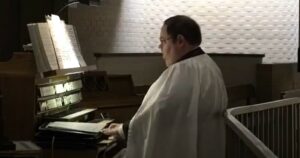
Liturgical Vestments
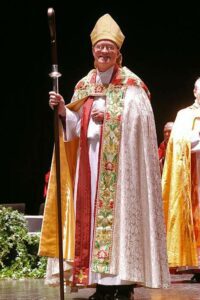
The distinctive garments worn by leaders of the Episcopal Church reflect the ordinary dress of the imperial Roman society when the early church came into being.
Vestments worn by the celebrant at the eucharist include a stole (indicating an ordained person) and chasuble reflecting the liturgical color of the day or season of the celebration. Bishops and priests wear the stole over both shoulders, and deacons typically wear the stole over the left shoulder. The celebrant also usually wears an alb. Bishops may wear distinctive episcopal vestments, including the rochet and chimere, and the miter.
A purple shirt with a clerical collar usually indicates that the wearer is a bishop, and a black shirt with a clerical collar usually indicates that the wearer is a member of the clergy.
The Hymnal 1982
The Episcopal Church has an official hymnal called “The Hymnal 1982“. It’s the authorized collection of 720 hymns and service music used in worship services throughout the church and replaced the Official Hymnal of 1940. It was approved by the General Convention in 1982 following a revision process that began in the 1970s.
There have been seven official hymnals in the history of the Church, the first in 1789. The process of revising the hymnal is a lengthy and complex one. It typically takes several years and involves extensive consultation with clergy, musicians, and laypeople. Individual churches may supplement it with other hymnals or collections of music. This allows for greater flexibility and adaptation to local contexts and preferences.
Passing the Peace

The Peace is initiated by the celebrant, who says, “The peace of the Lord be always with you.” The people respond, “And also with you.” The ministers and people then greet one another in the name of the Lord with. kisses on the cheek, hugs, handshakes, and nods.
Passing the peace is an ancient Christian practice. It has been associated with Romans 16:16, “Greet one another with a holy kiss,” and similar passages such as 1 Corinthians 16:20, 2 Corinthians 13:12, and 1 Thessalonians 5:26.. Justin Martyr indicates that during the second century the peace took place before the presentation of the gifts at the eucharist.
The Importance of Offerings to the Church
